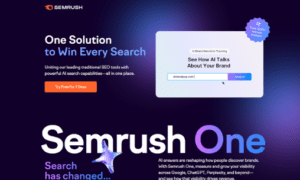The story of recovery has always been about second chances. But the modern version is getting a digital upgrade. With phones that track everything from heart rate to sleep, online therapy sessions that feel more personal than ever, and data that helps people see their progress in real time, technology is quietly changing what recovery looks like. It’s not a replacement for human connection. It’s a bridge that helps people get there faster, with more privacy and a sense of control that used to feel out of reach.
Breaking Barriers Through Connection
For years, access to help was one of the biggest obstacles in recovery. Geography, cost, and fear of being seen walking into a clinic kept many people from reaching out. Now, technology is eliminating those barriers. Virtual support meetings and counseling sessions make it easier to open up from the comfort of home, while chat-based therapy apps allow someone to reach a licensed counselor in minutes instead of waiting weeks for an appointment. This accessibility has shifted the tone of recovery entirely. Help no longer feels like an emergency response—it’s part of everyday life.
The anonymity of digital spaces has also been a game changer. People who might have avoided in-person meetings now find themselves logging in daily to online support groups, guided meditations, or live check-ins. Instead of isolation, there’s a quiet sense of community forming behind screens—a reminder that connection doesn’t have to mean exposure.
A New Era For Treatment Access
One of the most promising changes is the rise of alcohol rehab online. What used to require travel, time off work, and a rigid schedule can now be customized to fit individual lives. These programs combine medical oversight, group therapy, and digital progress tracking in one place, letting people recover without putting their world on hold. The flexibility has opened the door for those who couldn’t commit to traditional rehab but needed the same structure and accountability.
Online treatment also brings transparency that physical programs sometimes lacked. Participants can revisit recorded sessions, track emotional triggers through journaling apps, and connect instantly with a care team if they hit a rough patch. Recovery becomes something measurable, interactive, and personal rather than something dictated by a timetable or facility rules.
The Subtle Power Of Smart Support
It’s not just programs—technology itself is becoming a quiet support system. Smart devices help bridge the space between body and mind by making self-awareness part of daily routine. Wearables track heart rate variability, sleep cycles, and stress markers, giving people tangible insights into how emotions show up in their bodies. When paired with behavioral apps, these tools can alert users to early signs of anxiety or relapse triggers, prompting timely self-care or outreach before a spiral begins.
For many in recovery, this kind of feedback feels empowering rather than invasive. It turns recovery from an abstract process into a series of understandable patterns and choices. Seeing progress in the data—more consistent sleep, lower resting heart rate, better focus—provides proof that healing isn’t just emotional, it’s physical too.
The Emotional Tech Shift
While technology can’t replace human empathy, it can amplify it. AI-driven counseling platforms and digital journaling tools are helping therapists and coaches understand patterns faster, allowing for more precise and empathetic guidance. Recovery coaches are using real-time data to tailor care, adjusting programs based on when someone’s stress levels rise or when they report feeling detached. It’s a subtle evolution, but one that’s transforming the old image of treatment from something clinical to something collaborative.
Technology also gives people permission to take ownership of their story. The ability to privately record thoughts, track triggers, and see patterns gives individuals a sense of authorship over their recovery. They’re no longer passive participants—they’re editors of their own comeback story.
Rebuilding Trust In The Process
Recovery often requires rebuilding trust: with oneself, with others, and with the idea that change is even possible. Tech is helping rebuild that trust through consistency and transparency. Apps that track daily goals, gratitude journals, and self-reflection tools don’t just keep users accountable; they remind them of progress they might not otherwise see. The old idea of “starting over” gets replaced with “starting again,” a small but meaningful shift that technology helps make visible.
When progress can be tracked, setbacks lose some of their power. Instead of disappearing after a slip, people can look back at their data and see how far they’ve come. That proof of effort—tangible and real—makes it easier to keep going.
The future of recovery isn’t about gadgets or algorithms. It’s about giving people more ways to be seen, supported, and self-aware. Technology just happens to be the tool that makes it possible at scale. By meeting people where they are—on their phones, in their homes, or through data that reflects their reality—it’s making recovery feel less like a system and more like a shared human experience.



































